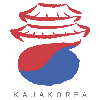How to say thank you in Korean
Depending on the situation, saying thank you in Korean can take many different forms. This article aims to show you which expressions of gratitude to use.
Saying thank you in Korean in a general way
감사합니다 [gamsahamnida]
감사합니다 is used in almost all everyday situations, both in formal contexts and in polite interactions with strangers such as shop assistants, servers, and so on.
고맙습니다 [gomapsseumnida]
고맙습니다 is very similar to 감사합니다, although it is slightly less formal. It can also be used in everyday life, but 감사합니다 remains the most common expression.
Saying thank you in Korean with close people
When it comes to close people, such as friends or colleagues at the same hierarchical level, it is possible to lower the degree of politeness.
고마워요 [gomawoyo]
Note: This expression should only be used with close people. Do not use 고마워요 with shop assistants, strangers, and so on. With very close friends who are younger or the same age, and ONLY in this case, you can simply say:
고마워 [gomawo]
Note: You should never say 고마워 in a polite context, and even less in a formal one, as it would make you sound very rude.
Thank-you verbs in Korean
| 감사하다 [gamsahada] | 고맙다 [gomaptta] | |
|---|---|---|
| Formal style | 감사합니다 | 고맙습니다 |
| Polite style | 감사해요 | 고마워요 |
| Casual style | 감사해 | 고마워 |
Thank you very much in Korean
To thank someone a lot, you can add the word 정말 [jeongmal] in front of all the expressions we saw earlier.
정말 고마워요! [jeongmal gomawoyo]
To be very formal, for example if you work in Korea as a salesperson and want to thank an important client, the common expression is:
대단히 감사합니다. [daedanhi gamsahamnida]
Traveling to South Korea can be an unforgettable experience. But when you don’t speak Korean, everything gets more complicated: ordering in a restaurant or café becomes stressful, you can’t understand signs or directions, asking for help in case of trouble is nearly impossible, and most importantly, you miss out on the very essence of a successful trip to Korea: connecting with the locals.
Since English - Korean machine translators can’t always be trusted (the two languages work in completely different ways), it’s essential to prepare yourself in advance to fully enjoy your trip to South Korea!
Learn more

